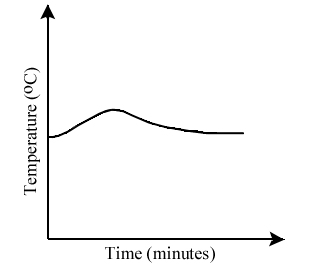Insulating a house
This task is about fair testing insulation.
| Sarai set up an experiment to investigate the effect of house insulation. She made models of two houses – one that was insulated, and one that was not insulated. She used a cardboard box as a house and a sealed container of hot water as a "heater" to warm the house. This diagram shows a section of Sarai's insulated house with its side and roof removed. |
 |
| a) |
How would the walls be different in Sarai's non-insulated house?
|
|
| b) |
Describe three things Sarai would need to keep the same to make her investigation a "fair test".
|
|
| 1. |
|
|
| 2. |
|
|
| 3. |
|
|
| c) |
This graph shows Sarai's temperature readings in her non-insulated house.
On the same graph, draw a line to show how Sarai's temperature readings would be different for the insulated house.
|
|
 |
||


